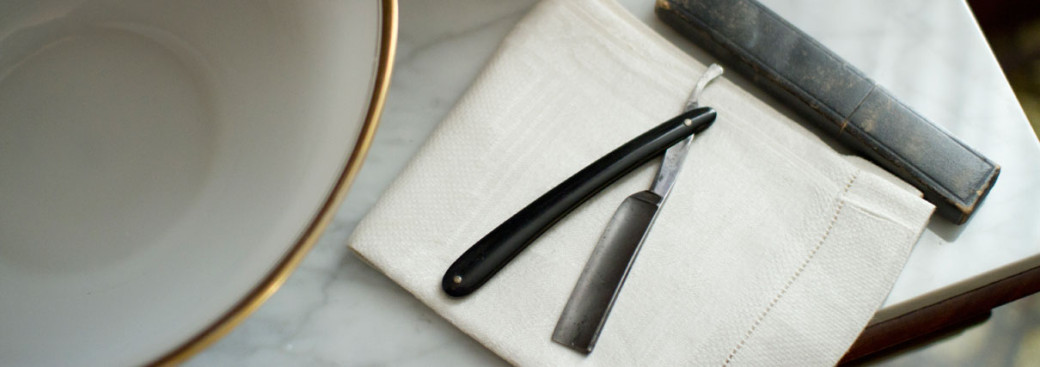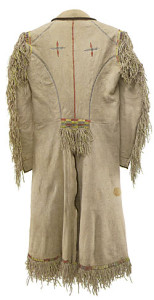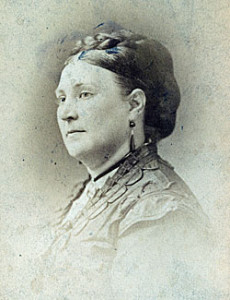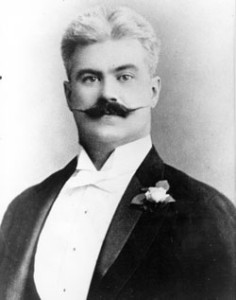Robert Campbell was born on February 12, 1804, in his family’s home, Aughalane. The house was built by his father, Hugh Campbell (not to be confused with Robert’s son and brother, who were also named Hugh Campbell), in 1786 in County Tyrone, Northern Ireland. Aughalane is today preserved by the Ulster American Folk Park, and has been moved to Castletown, Northern Ireland. Take a
virtual tour of Aughalane House and visit the Folk Park.

Robert Campbell (1804–1879)
© Campbell House Foundation 2004
As the youngest son of the second wife, Robert stood to inherit little, and at the age of 18 in 1822, he followed his older brother Hugh to the United States. Despite having no formal education, Robert demonstrated a keen sense of business, and soon landed a position in the western trade hub of St. Louis. Trade in beaver furs, as well as shipping traffic, fueled the growing metropolis. When Robert contracted consumption (tuberculosis), doctors recommended he join the fur trade and breath the clean air of the Rocky Mountains.
From 1824–1835, Robert roamed the mountains and made acquaintances with men like Jedediah Smith, William Sublette, William Ashley, and the Cree Indian Chief Sonnant. He also took part in the famous Battle of Pierre’s Hole. Robert steadily climbed the ranks of the fur trade companies, eventually becoming co-owner of a trade company with Sublette. Both men realized the fur trade was dying, and from 1835 onwards, the two focused upon dry goods, banking, real estate, and river trading.
That same year, Robert met Virginia Kyle (b. 1822) while both were sojourning in Philadelphia. The daughter of Hazlett Kyle of North Carolina (d. 1833) and Lucy Ann Winston (1800–1883), Virginia was attending school when they met. Despite the vast difference in age (Virginia was 13 and Robert was 31), the two fell in love and began a six-year long-distance courtship before they married in 1841. The Campbells settled in St. Louis on 5th Street and started a family. Of their thirteen children, only three survived their parents as diseases like cholera, diphtheria, and measles struck again and again.
In 1854, the Campbells moved out of the crowded city to the exclusive, elite neighborhood of
Lucas Place, taking up residence at what is today the Campbell House Museum. While there, Robert and Virginia continued to climb the social ladder. Robert became one of the wealthiest men in Missouri, extending his real estate empire as far as El Paso and Kansas City, serving as president of two banks, and managing the finest hotel in the city, the Southern. Virginia gained a well-earned reputation as a graceful hostess, making Campbell dinner parties one of the most sought-after social engagements. Such weight was attached to the Campbell name that figures such as President Ulysses Grant, James Eads, Henry Shaw, and General William Sherman all made appearances.
Robert passed away in 1879, followed by Virginia in 1882, leaving the house to their sons Hugh (1847–1931), Hazlett (1858–1938), and James (1860–1890). The three lived off their parent’s fortune for their entire lives, and none married. James attended Yale and Harvard and lived with Hugh in Paris for several years before dying at the age of 30 of influenza. Hugh returned to the Campbell House, where he became known for his generosity and charity.
His most consistent giving was to Father Dunne’s Newsboys Home, to which he provided lavish Thanksgiving dinners. Relatively little is known about Hazlett, who seems to have suffered a mental disease of some sort. He became reclusive, and eventually required daily visits by doctors following a stroke. Hugh stopped entertaining in the early 1900s, and soon only servants and a few local children ever entered the house.
When Hugh died in 1931, Hazlett was declared of “unsound mind,” throwing into question the fate of the Campbell estate. While a lengthy court battle broke out among the Campbells various relations following Hazlett’s death in 1938, some St. Louisans were more concerned about the house and its contents. Through their efforts, the Campbell House Museum was formed, and soon managed to purchase most of the Campbell’s original effects. The Museum opened in 1943.





